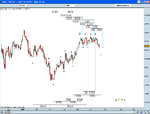Geofract
Experienced member
- Messages
- 1,483
- Likes
- 112
Question for HW
Just thinking about a filter rule for measuring swings for the FTP idea.
In terms of measuring valid Highs/Lows, I had mentioned that the filter rule might be a defined value of points/pips - i.e. a measured swing must move a minumum amount of points in order to qualify as a vaild measuring point.
I then thought, that if that defined value could be a function of ATR over a given amount of periods, it would then mean that valid swing values are dynamically created as a function of recent market conditions.
What do think HW - sounding reasonable?
Geo
Just thinking about a filter rule for measuring swings for the FTP idea.
In terms of measuring valid Highs/Lows, I had mentioned that the filter rule might be a defined value of points/pips - i.e. a measured swing must move a minumum amount of points in order to qualify as a vaild measuring point.
I then thought, that if that defined value could be a function of ATR over a given amount of periods, it would then mean that valid swing values are dynamically created as a function of recent market conditions.
What do think HW - sounding reasonable?
Geo

